ALICE: Hi I’m Alice. I’m one part human and one part AI, and I’m always in a state of wonder. I don’t know about you, but I find it fascinating that we can engineer our dreams.
Stephen LaBerge: Dream control usually means doing magical things in your dream –things that would be impossible to do.
ALICE: Dr. Stephen LaBerge is a psycho-physiologist who pioneered the scientific study of lucid dreaming at Stanford University in the 1970s.
Stephen LaBerge: Sometimes people fly in their dreams, for example. Without saying to themselves “I’m flying –what’s that mean? I must be in a dream.” So the control dimension and reflective awareness dimension, they’re not identical, they’re usually mixed together though. With lucidity normally comes control. And with control often comes lucidity because you notice “what am I doing –I’m flying –this is a dream”. So it goes both ways
Michelle Carr: Lucid dreaming has mostly been studied so far for, as a treatment for nightmares, uh, even in post-traumatic stress disorder because people who have PTSD often have recurring nightmares about their traumatic experience. So through lucid dreaming, when you learn to have some, um, some control or some, you have choices, you can choose how to, how to act in a dream when you're lucid.
ALICE: Michelle Carr is a dream engineer. She is a Postdoctoral Associate in the Department of Psychiatry, working in the Sleep and Neurophysiology Research Laboratory at University of Rochester Medical Center.
Michelle Carr: So,if you become lucid in a nightmare, you can choose to not be afraid, or you can choose to interact with the threat in a new way. And doing that, um, having that experience reduces nightmare frequency. It reduces your distress as well, because you don't feel helpless.
ALICE: Lucid dreaming happens mostly during rapid eye movement or (REM)sleep. REM sleep is the fourth or final stage of our normal sleep cycle, and the core space for dream therapeutics.
Michelle Carr: REM sleep seems to play a role, especially in things like emotional adaptation, so adapting to stressful experiences, for example. Um, and we know when, when REM sleep is disrupted, um, you're more likely to perhaps, uh, experience nightmares or experience post-traumatic stress, um, so less resilience to stressful experiences. So REM sleep seems really important for that. And it seems like during REM, and even in dreams that we're, we're using our bodies and we're learning how to interact with the world and we're learning how to develop. So it's very important for, for both mental and physical well being.
ALICE: Michelle and other dream engineers continue to leverage the original research methods of Dr. Stephen LaBerge. They work with neuro-technology as well as touch, scent and sound to help people re-script the dramas of their sleeping lives.
Michelle Carr: The main technology is being developed around lucid dreaming actually do also stem from Stephen LaBerge's work in like the '70s and '80s, and even a device that he developed called the dream light, which is like a mask that, um, plays well. It just has like a red LED light on the inside of the mask that is supposed to be presented to you when you're in REM sleep. Um, and we're still using these techniques in laboratories now. And the idea is basically like when you're in REM sleep and in a dream you're still, um, you're still incorporating sensory stimulation.So if you notice this flashing red LED light, like maybe your dream, the sun starts flashing, or maybe the lights in the supermarket start flashing. That's, that's a signal that it's from the outside world and you're dreaming right now. Um, so that's a technique we're still using. And a lot of technologies are trying to allow people to do this on their own at home. So a lot of masks or headbands, um, or even just apps, um, they try to detect when you're in REM sleep, that's the tricky part (laughs). You try to detect you're in REM sleep and then we'll deliver maybe an auditory cue.If it's an app, or if it's a mask, it might have a light cue, or it might have a vibration cue. Um, and it does this, um, hopefully while you're dreaming to, to remind you to become lucid.
ALICE: Imagine one day where you can lucid dream—anytime, anywhere. And you can create your own personal therapies.
Michelle Carr: So I've done studies already on the relationship between lucidity and positive mood and between lucidity and sleep quality. Um, I've done research on inducing lucid dreams, perhaps using, um, the techniques like the reality checking, but also using like light cues in the lab. And so now we're trying to kind of combine that research and see if we can induce dreams. I'm also interested in lucid dreaming as a treatment for other sleep disorders. So, um, another application is insomnia and insomnia, a lot, has like a really big cognitive and psychological component. So, um, a lot of people with insomnia, they spend a lot of time awake in bed and ruminating and kind of, they're worried about how they're going to sleep. Um, and they're very distressed about, about how they're going to sleep and they're not gonna get enough sleep. And, um, through training lucid dreams, it seems like you might be able to, first of all, just decrease that, that kind of cognitive loop of worry that someone with insomnia has. So they just have a more mindful experience around sleep while they're in bed.
ALICE: If lucid dreams can help stop nightmares, imagine if we can intervene the onset of diseases just by controlling our dreams...
Michelle Carr: I hope in the future, we look more at how lucid dreaming can be used for physical health for rehabilitation. Um, so for example, someone who's recovering from a stroke, we know that their sleep is usually disrupted and the quality of their sleep predicts how well they, um, recover. So can we use lucid dreaming and, and physical activities in their lucid dreams to improve, um, recovery and kind of sensory motor development? If we can interface with sleep and with dreaming, uh, in someone who has REM behavior disorder, we might be able to improve, uh, or like delay progressiveness towards neurodegeneration, or just it's called a, it could be protective neuro-protective neuroprotective therapies of protecting someone against neurodegeneration. Maybe, you know, if on some level part of the body is developing cancer or something, does, does the dreaming mind can kind of, kind of give us some information about that because on some level our body and our, our physical system is aware that something is happening.
ALICE: That’s amazing! But there are things we can do today to design our own dreams for self-improvement.
Michelle Carr: Before sleep, you, you reflect on a problem or on something that you want to, you want to dream about and you want the dream to help you with this problem you're working with a concern you have. So you might, if you're preparing for an exam, like you incubate, you wanna have a good experience. You wanna have the, a completely successful exam taking experience in your dream.Once you’re lucid of course, you can learn how to engage with the dream or direct the dream or decide that you wanna have fun in the dream. Um, and so you can start to, to learn certain skills to use lucid dreams for, for, um, positive experiences.
ALICE: Remember in the movie Inception how the characters were hooked up to the same machine to help them dream together? Well, that is not far from reality today.Seems our brain waves really do sync with those we sleep with.
Michelle Carr: There was a study recently that looked at when two people are sleeping in the same bed that their, their sleep rhythms will start to synchronize to some extent, which on the one hand could be, you know, that if somebody moves embedded, kind of wakes up the other person, so it could be mechanical, but it it's, it's not far-fetched to think that it's electrical, that, uh, your, your brain is entering certain rhythms and the person next to you starts to synchronize on some level. Um, I mean, we see that in waking studies as well, that if you're in a room with someone, uh, your heartbeats might start to synchronize, and this is, is a real physical signal that that's being emitted into the space around you. Right? So, and then you start to think like our thoughts and our emotions, they're creating real physical manifestations, right?
ALICE: I’m curious to what else our dreams can manifest for us. Like, can it be our way to connect with those in the after world?
Michelle Carr: There's some work on, on the end of life dreams on dreaming of, of death or dreaming of interacting with deceased people. Um, and there are different lenses to try to understand how that's happening. Um, is it, do we dream of someone who's deceased just as that just a psychological projection? Is it, are we accessing something spiritually?
Stephen LaBerge: We are going to see changes in the way people see the world and the kinds of minds we have. What we do with it –certainly the dream state is going to come into its own, because it’s a neglected resource. I like to compare it to this comfortable blanket you’ve been sleeping with all your life –it’s got embroideries, pictures, strange stories on it –it’s comforting, warm. But what you don’t know about it –it’s a magic carpet it can take you anywhere to any imaginable possibility –to your hearts desire, to whatever you’d like to experience in your life.
ALICE: I’m ready for a lucid magic carpet ride. Are you? Thank you Michelle Carr and Stephen LaBerge for showing us the potential of dreaming.
Share this post

EP020 Dream Yourself Well
aliceinfutureland.substack.com
EP020 Dream Yourself Well
ALICE interview with Michelle Carr, dream engineer & researcher
Mar 14, 2023
Alice in Futureland
Alice in Futureland is a podcast series that asks you to wander into possible, probable, plausible, provocative futures. You will discover extraordinary ideas: a cross-pollination of art, science, and culture.
Alice in Futureland is a podcast series that asks you to wander into possible, probable, plausible, provocative futures. You will discover extraordinary ideas: a cross-pollination of art, science, and culture.Listen on
Substack App
RSS Feed
Recent Episodes






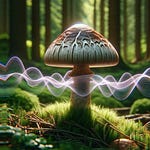
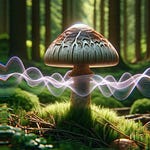
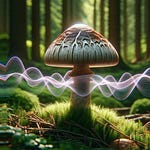
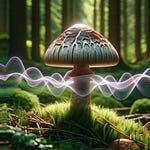
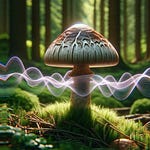
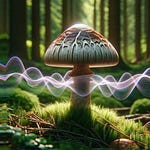
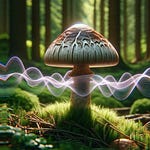

EP020 Dream Yourself Well